Home extension design ideas
10 best designs to reinvent your home |
When you purchase through links on our site, we may earn an affiliate commission. Here’s how it works.
(Image credit: Future)
House extension ideas are amongst the most sought-after of building projects for homeowners.
Get your house extension just right and you won't just create a big open-plan room with space for dining and seating. Smart extension ideas can add more valuable space to your home and can increase the value of your property, if you decide to sell, too.
Below, we have gathered the best house extension ideas to suit all house design styles and sizes of homes, and a wide range of budgets, too. There are different material choices to consider, plus expert advice to help you make the right decision.
House extension ideas
These house extension ideas will inspire you to get started on your project. Remember when planning a kitchen extension, the key to success is to pick an extension style that either complements your home's existing materials and period, or contrasts with it completely.
1. Consider extension ideas for small houses
(Image credit: Ståle Eriksen)
Architectural practice Studio Hallett Ike’s ER Residence started as a small but well-proportioned one-bedroom flat in a Victorian terraced house. But thanks this clever home addition idea, the space was opened up into a two-bedroom apartment.
‘The new dining area, above, provides an immediate visual link to the garden,’ says co-founder Madeleine Ike. ‘We kept the material palette simple, using raw and natural materials. Stained Douglas Fir joinery forms a bespoke dining bench that extends from the kitchen. We also designed the dining table which is made from blackened steel.’
Keeping the overarching palette warm, muted and minimal throughout helps to make the whole flat feel cohesive.
2. Be sympathetic to existing house styles
(Image credit: Johan Dehlin)
A ruined cattle shed seems an unlikely starting point for a new home but architect Will Gamble thought otherwise and his vision created The Parchment Works for his clients.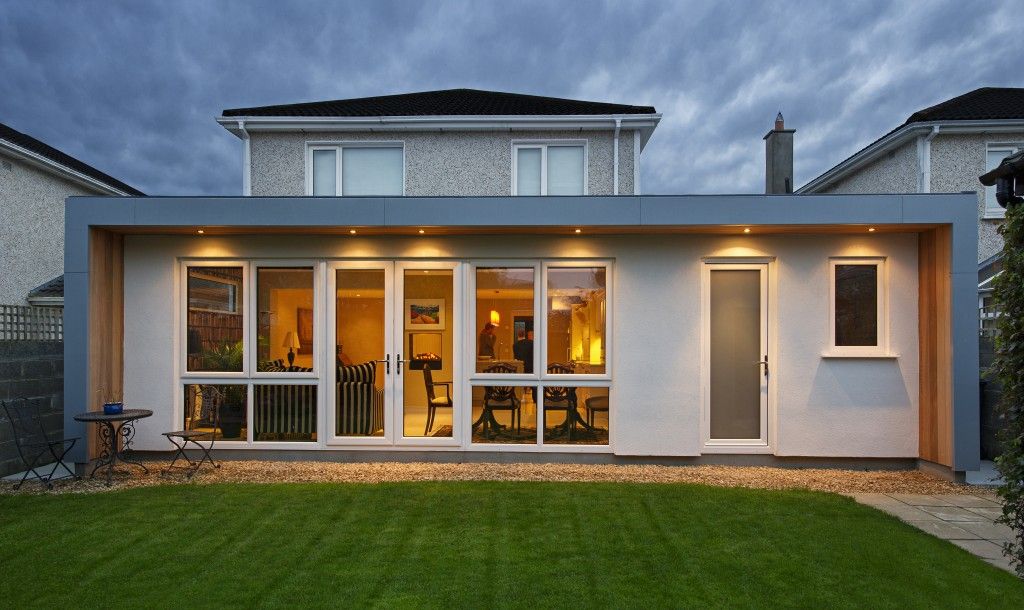 ‘Initially the owners wanted to demolish the former parchment factory,’ says Will, ‘but I convinced them the ruins could be celebrated through a sympathetic intervention.’
‘Initially the owners wanted to demolish the former parchment factory,’ says Will, ‘but I convinced them the ruins could be celebrated through a sympathetic intervention.’
Will’s design created ‘a building within a building’, where two lightweight volumes were inserted within the old walls. ‘I exposed the beams of the cattle shed, as well as steelwork in the new parts. The clean lines of the kitchen helped to juxtapose the uneven nature of the older structure making a contemporary intervention set within a historic context.
3. Extend the ceiling upwards
(Image credit: Mel Yates)
The owners of this elegant Victorian-era country house in Dorset enlisted the help of interior designer Emma Sims-Hilditch of Sims Hilditch to help them to envision a new kitchen extension idea for the property. ‘The answer was to preserve the original, grand parts of the house while opening up and rationalizing the secondary spaces that had been added later on,’ explains owner Sarah Ainsworth.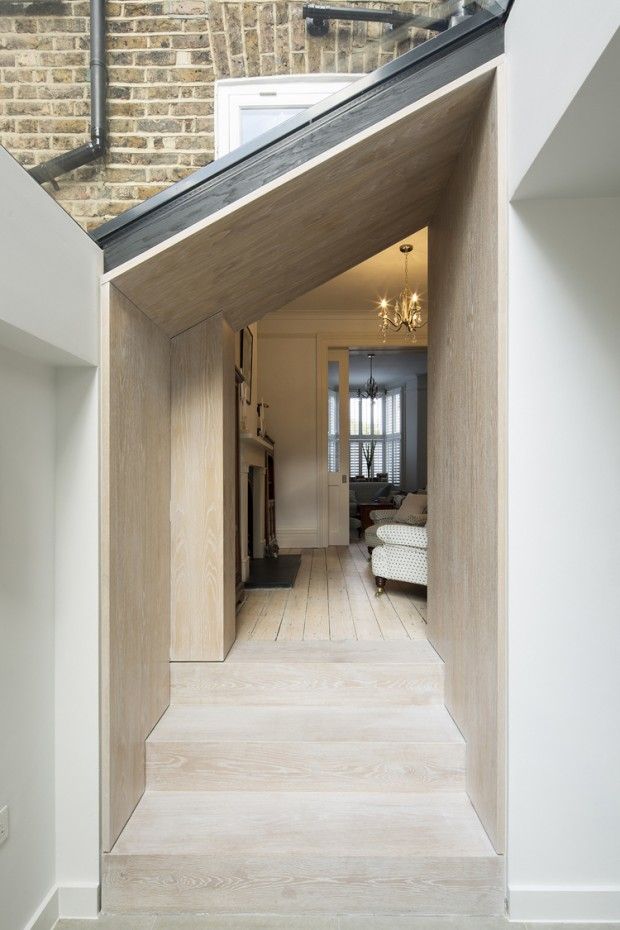
The rear extension was replaced with a large open-plan kitchen idea, dining and seating area with a show-stopping roof lantern that brings in lots of light and ceiling clad in rough, whitewashed boards to add texture and improve the room’s acoustics.
4. Use natural materials for any home additions
(Image credit: David Salisbury)
Planning a home addition can be an opportunity to let materials shine. Oak is the star in this Somerset house which has been renovated by David Salisbury, replacing two smaller structures with one space that can be enjoyed all year round. A fully glazed garden room has been created that features a new chimney made using brick and stone to match existing materials.
‘Our client wanted a rustic look so opted for natural, unfinished oak,’ says creative director Karen Bell. ‘This type of open-plan living room is perhaps our most popular request. Being able to combine the functionality of a kitchen extension, alongside a living room and dining room, we have captured the essence of modern living. ’
’
5. Maximize efficiency and sustainablity
(Image credit: David Butler)
As well as respecting the history of this Grade-II listed Cambridgeshire farmhouse, Mole Architects also made sure that sustainability was part of the process, following ‘passivhaus’ principles to maximize energy efficiency. As well as ticking the environmental boxes, the clients asked for a home that was at once both special and modest, using unfussy finishes that enhanced the older structures and complemented the new.
Rescued from near dereliction, the property now boasts a garden room, kitchen and main bedroom all in buildings that adjoin the 17th-century cottage. The revitalized design has also created a new connection with the garden and offers beautiful views across the nearby water meadows.
6. Let light in
(Image credit: Chris Snook)
When designing your house extension, it’s important to think about how natural light will enter the space and move throughout the day.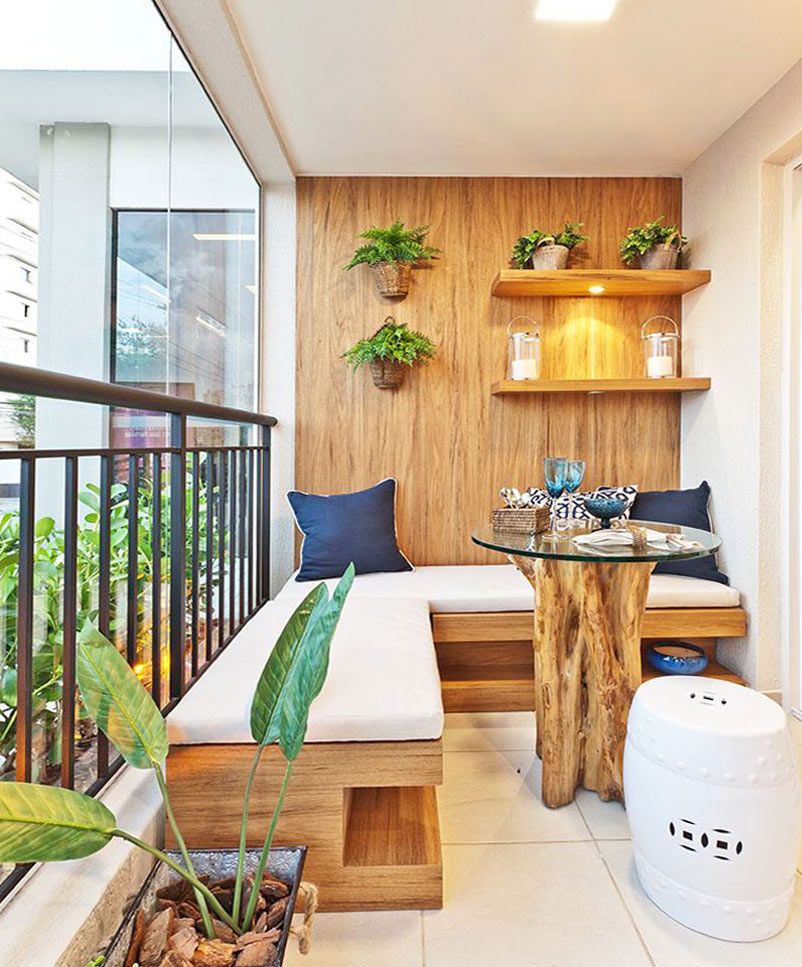 Light is a vital consideration for extensions – and glazed doors, windows and skylights can be game-changers.
Light is a vital consideration for extensions – and glazed doors, windows and skylights can be game-changers.
Opting for a glass ceiling instead of a skylight will allow light to flood in, making the area feel bigger and brighter. But glass isn’t limited just to your ceiling ideas – adding a glass partition wall will not only create a slick design feature but will help to unite the space overall.
7. Reunite with nature
(Image credit: David Butler)
Combining indoor and outdoor living is an integral trend, and should be taken into consideration when planning an extension for your home.
Architecture and design studio Levitate had to do some serious juggling to breathe new life into the tricky layout of this Victorian mid-terraced home in north London. The result is a striking zinc-clad rear extension that appears as a garden pavilion, and features a cantilevered structure with bifold doors that allow the extension to be opened up entirely onto the garden.
Spencer Guy at Levitate illustrates how important it is to know where light is coming from and how it will change through the seasons: ‘Our client’s brief was for the space to be used comfortably during the day in summer and in the evening in winter. The analysis showed a glazed roof would work fine in summer through the use of shading devices but it was a challenge in winter without excessive heating. We redesigned the roof to include the characteristics of a conservatory but using smaller roof lights so more of the fabric could be insulated. The roof lights were still large, but they were standard products with proprietary opening systems, which made for a better functioning, more cost-effective solution.’
8. Don't obstruct views out to the garden
(Image credit: Taran Wilkhu)
Don’t let a lack of space restrict your style – or block your view to the outdoors. Taking an ambitious approach to the design and fittings can result in a striking small kitchen idea that punches way above its weight.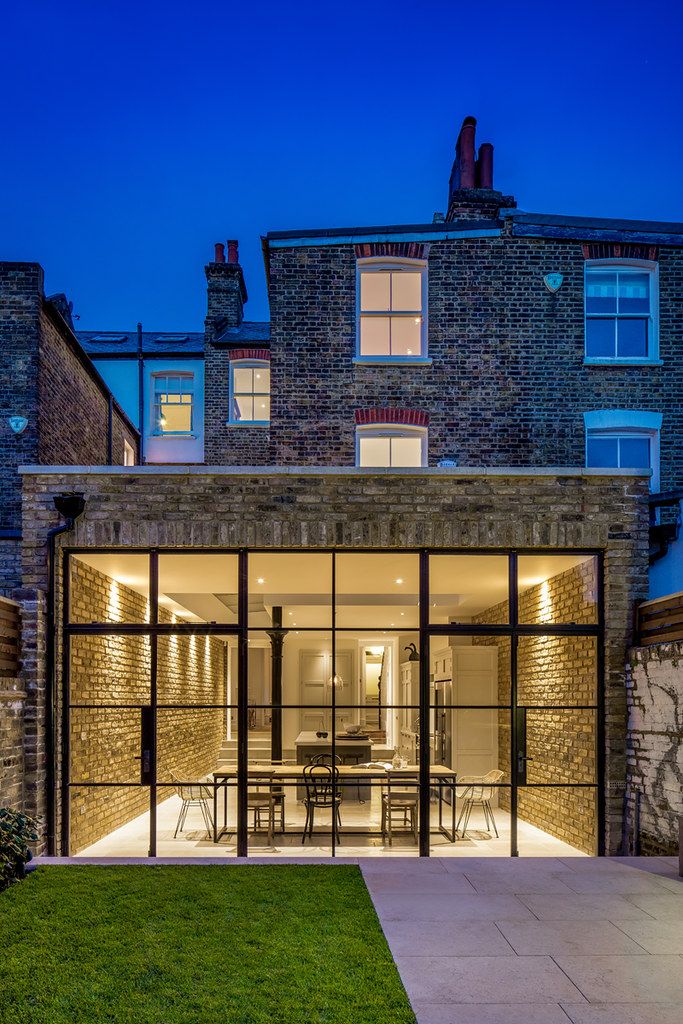
To create a separation between the kitchen and dining areas without losing the views to the garden, architect Alex Michaelis installed a low wall. ‘It also gives a feeling of protection while sitting on the banquette, allowing it to run longer and seat more people.’
(Image credit: Dan Glasser)
With vision and careful planning a huge amount can be achieved. This house extension project started as a relatively simple rear extension and roof terrace but became much more radical. Mulroy Architects’ plans saw four storeys of staircase moved and a floor removed to create a dramatic double-height atrium which brings daylight and views into all levels.
10. Retain the existing structure, style and materials
(Image credit: Joakim Boren)
By their nature extensions are not built in isolation. The design must consider the building they are connected to and also the environmental impact.
Napier Clarke Architects reclad the existing extension on this 1970s house in Buckinghamshire and returned it to its original brick form.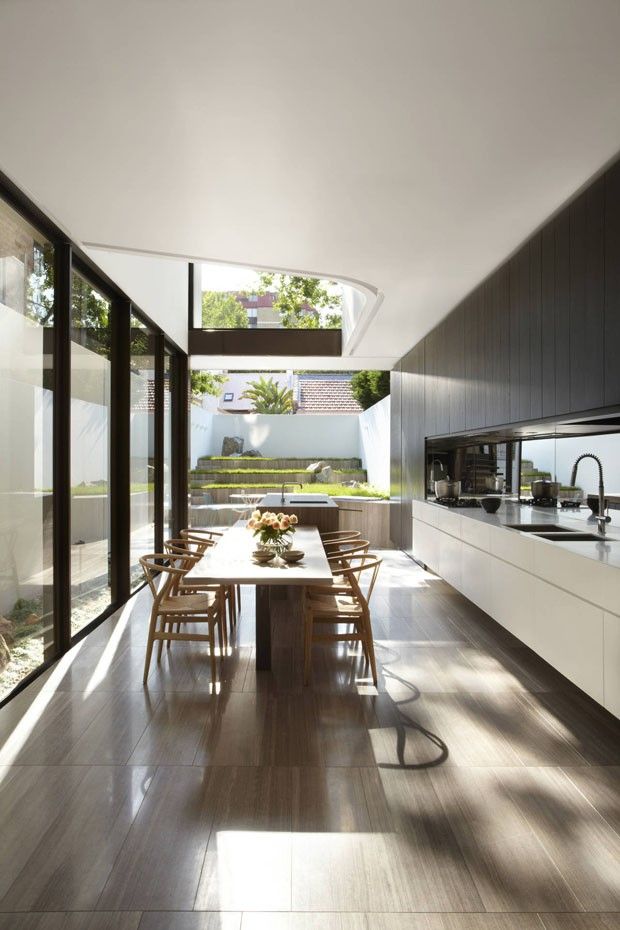 As Steven Clarke says: 'This creates a more contemporary home, which reflects the local vernacular and materials.
As Steven Clarke says: 'This creates a more contemporary home, which reflects the local vernacular and materials.
‘One of the key decisions for this house extension project was, should we knock down and start again, or work with what we have?’ said Steven Clarke from Napier Clarke Architects. ‘We believed we could work with the original house as a way of creating a highly sustainable project through the virtue of retaining the existing.’
Steven’s clients were keen to retain the existing structure if it was more cost effective, but they also recognized the sustainable benefits. Once the decision was made, the ground floor, first floor and roof were insulated to reduce thermal loss. All windows and doors were changed from single-glazed to double-glazed and the heating system was replaced.
Is it a good idea to extend your house?
It is certainly a good idea to extend your home. Smart extension ideas can add more valuable space to your home and can increase the value of your property, if you decide to sell, too – but do be mindful of costs.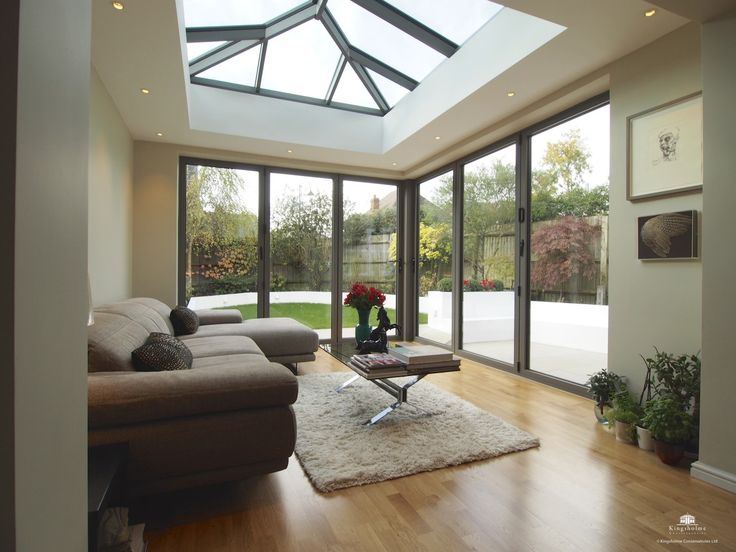
‘Cost control starts from the outset, says architect Andrew Mulroy: ‘Try to keep as much of the existing structure as you can. This means that all areas of the house are fully utilized rather than some rooms being dark and redundant. Get regular cost checks on your design as it evolves so you can steer it back on track before going out to tender. This will allow you to understand where financial risks are and help avoid the temptation to change things on site, which is always more expensive.’
Kate Burnett is a journalist and editor who has been writing about residential design and architecture for nearly 20 years. A former acting executive editor of Homes & Gardens and Livingetc, she has written for national newspapers and magazines including the Financial Times, Evening Standard and Sunday Times. A trained designer, she has also worked with leading architecture and design practices including dRMM and Keechdesign.
20 House Extension Ideas | Homebuilding
When you purchase through links on our site, we may earn an affiliate commission.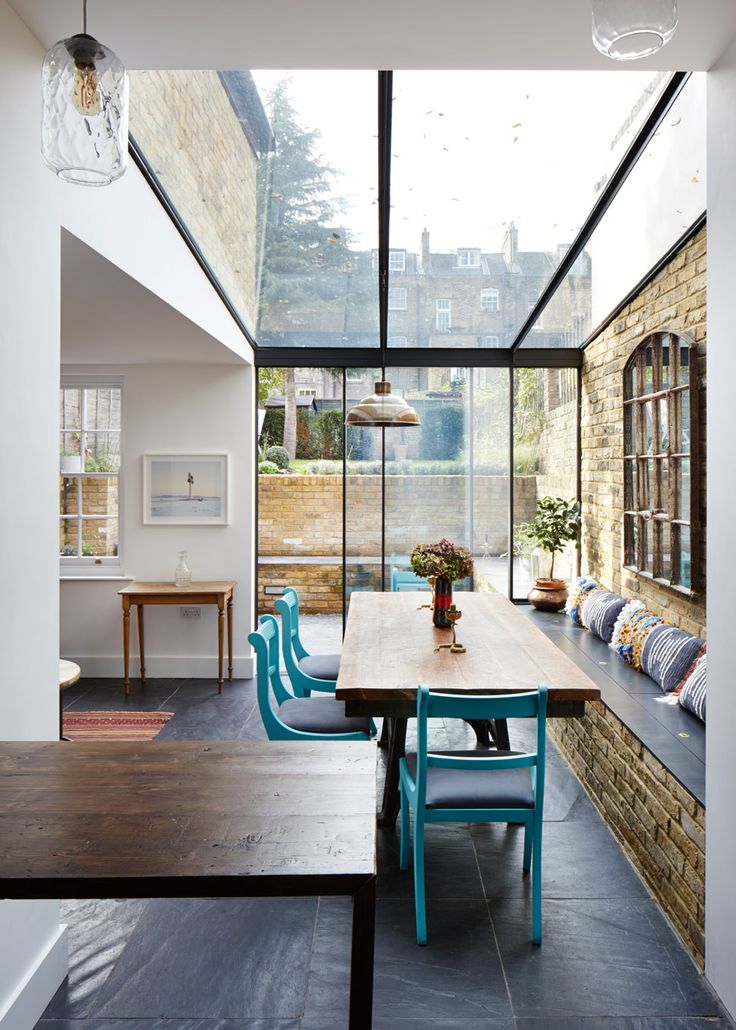 Here’s how it works.
Here’s how it works.
Looking for house extension ideas? If you are planning on extending your home, then you will need to research what kind of extension you want to build. These 20 ideas will provide loads of design inspiration to help you create the best addition for your home and to get your project off the ground.
For a comprehensive guide to costs, planning and what you need to know before starting an extension project, take a look at our beginner's guide to building an extension.
1. Reconfigure Your Existing Space During a House Extension
Knocking through walls in terrace houses or other awkward layouts during an extension, as in this project, can make a huge steps towards a functional and modern home (Image credit: Darren Chung)When it comes to good house extension ideas, the existing space is often reconfigured to make the most of the new space. The reconfiguration will allow you to establish the optimum layout to make the most of access, views, natural light and privacy.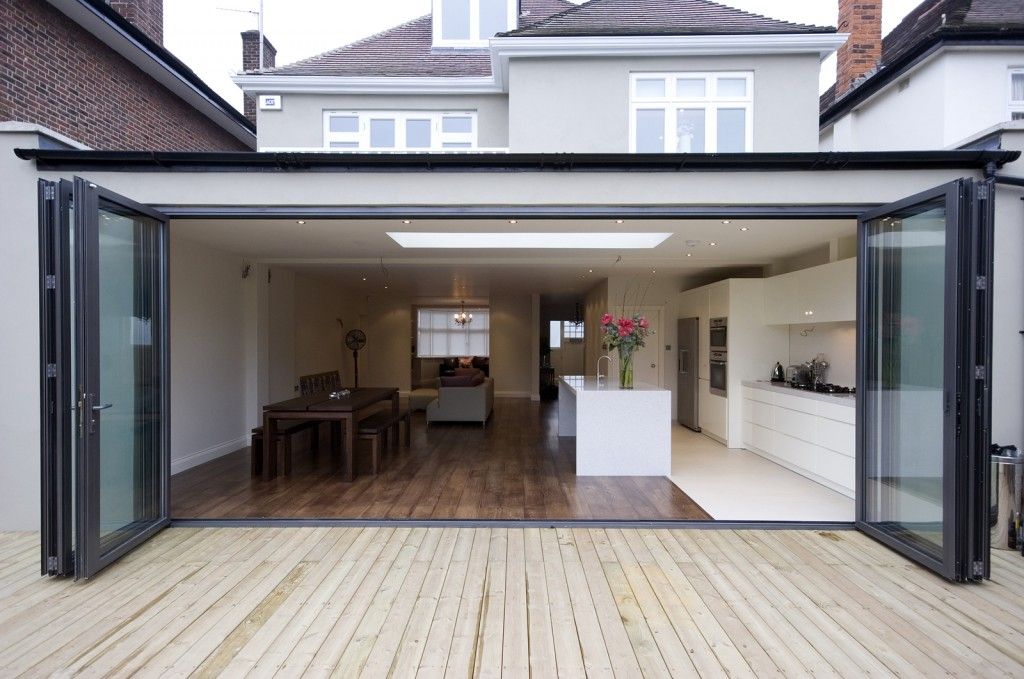
Knocking down internal walls and or moving doorways to achieve the space you require and to integrate any new extension, to ensure you get real value and use from it.
Consider the position of the entrance and central hallway design – which should lead efficiently to all main rooms – and the relationship between key spaces, such as the proximity of the dining area to the kitchen.
Use our Extension Cost Calculator.
Key Tips
- If you can’t match a traditional home exactly, don’t try. A contemporary contrast is a more honest solution in this case
- It’s all about light. An extension will take away some of the light source to your original rooms, so make sure it is packed with glazing
- Create a feature. Whether it’s a striking staircase design, fireplace, kitchen island or something else
2. Consider a Two-Storey Extension
Building two storeys rather than one is a great idea for those who are looking to achieve maximum value for money with their house extension idea, as the average cost per square metre (m²) is reduced by stretching the more expensive elements of roof and foundations over a larger area.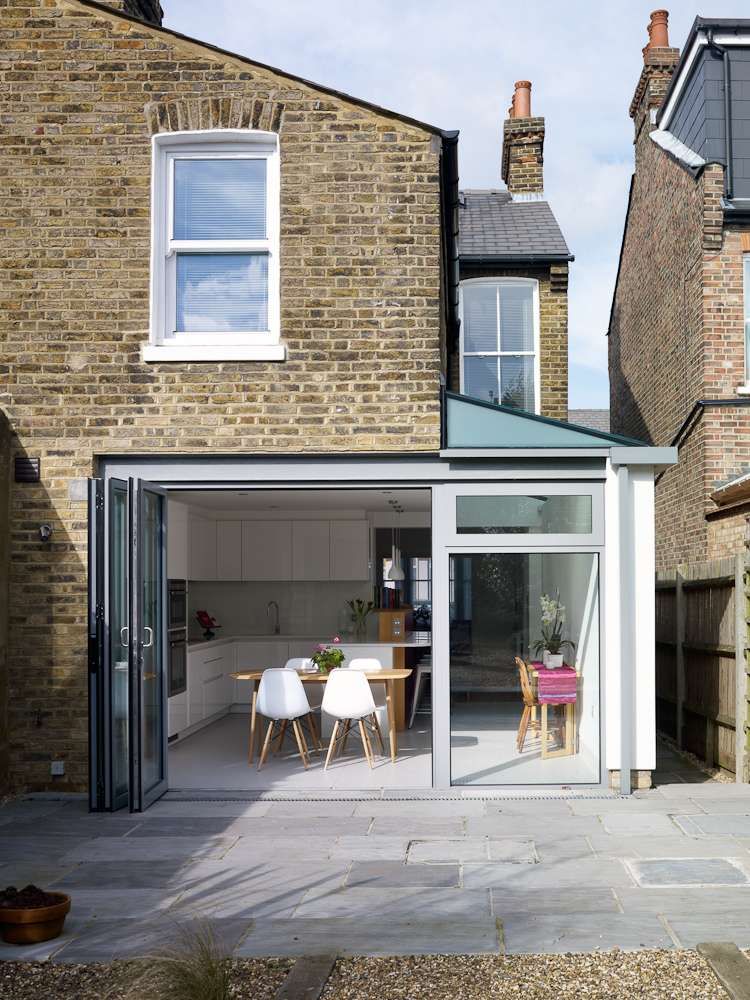
(MORE: How to Add a Two Storey Extension)
This cottage has been extended with a large two-storey addition and new veranda (Image credit: Simon Maxwell)You could also build an extra storey over the top of an existing single-storey structure, such as a garage (providing the existing foundations and structure are adequate enough).
(MORE: How much will my extension cost?)
3. Choose the Right Materials for Your House Extension
The same stones from the local quarry were sourced for this oak-frame extension by Oakwrights. The roof slates will also weather to match the original bungalow (Image credit: Richard Keily c/o Oakwrights)Another great house extension idea is to choose either a contrasting but complementary style, or make the extension look like it has always been there. The former is much easier to pull off well.
If you decide on the latter, make sure you are matching materials and copy the key design elements, roof pitch and details like the brick bond and even the mortar colour, or your new addition will look wrong.
4. A Contemporary Kitchen is a Great House Extension Idea
If you are looking to create a contemporary kitchen extension but don’t have the budget for a bespoke design, create your own using modular units, combined with end panels, worktops and other features sourced elsewhere to recreate the same look.
This kitchen was sourced online to keep the extension's overall costs down. The on-trend timber kitchen – from Units Online – was installed at a third of the original design quote. (Image credit: c/o Effie Dracou)Most trade suppliers do not offer panels large enough to create big islands or floor-to-ceiling banks of units to form an ‘appliance wall’, without obvious joints.
You can overcome this by buying large sheets of MFC (melamine-faced chipboard) in a matching or complementary finish from a specialist such as Timbmet together with matching iron-on edging strips. Sliding metal timber unit doors to suit standard-size cupboard units are also available from CK Kitchens .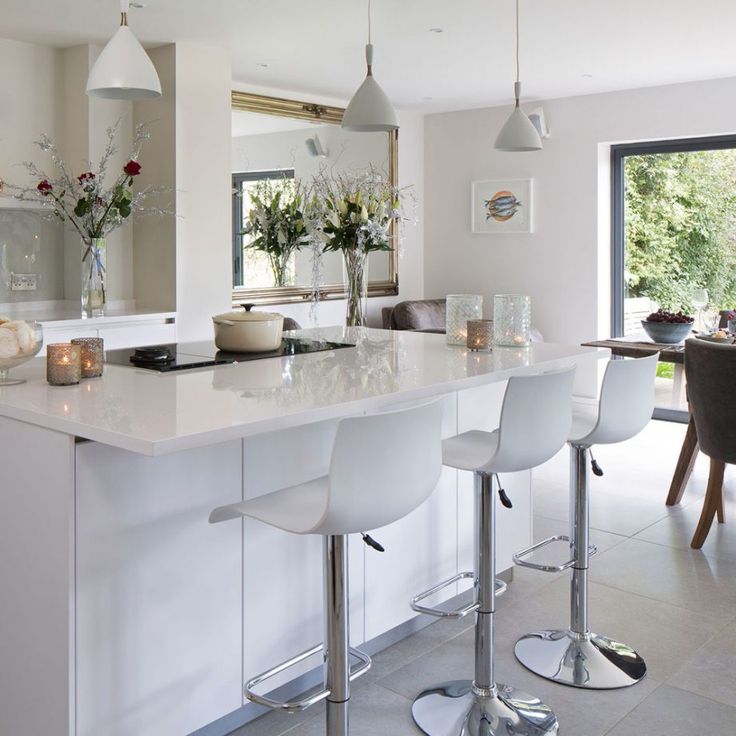
5. Add a Conservatory or Sunroom Extension
If you are looking for a relatively inexpensive house extension idea, then this is where the conservatory or sunroom comes into its own. Smaller conservatories often don’t require planning permission, are excluded from the Building Regulations and are fairly cost-effective, making them one of the most popular home improvements.
A conservatory can have its drawbacks, however: it must be separated from the house by external doors to reduce energy loss, and it can be difficult to heat in winter and keep cool in summer.
Adding a sunroom is a popular alternative. They are an extension with large areas of glazing, but with a conventional insulated roof and typically one insulated wall (particularly the one facing the boundary). The space can be open to the rest of the house, and the temperature can be controlled more easily.
(MORE: On a budget? Here’s how to keep costs down when building an extension)
6.
 Don’t Forget Ceiling Space When Considering Your House Extension IdeasA difference in levels between the old dining room and the kitchen meant that this side return extension needed to be 3.8m. The wall was instead topped with glass to make the most of the quirky ceiling heights (Image credit: Simon Maxwell)
Don’t Forget Ceiling Space When Considering Your House Extension IdeasA difference in levels between the old dining room and the kitchen meant that this side return extension needed to be 3.8m. The wall was instead topped with glass to make the most of the quirky ceiling heights (Image credit: Simon Maxwell)Tall ceilings can transform the way a room feels — larger rooms especially are made to feel even more spacious and impressive. An extension gives scope to add this feature for relatively little cost, either by digging down to lower the floor level, or by building up. In a two-storey extension this may result in a split-level on the first floor, which can add interest.
Where an extension is beneath a pitched roof, there may be the option to create a vaulted ceiling, open to the ridge. Instead of building a conventional flat ceiling with a void above, fit insulation within the pitched roof structure to create this feature.
When it comes to period homes, it can be especially difficult to find the right extension design to complement the existing property.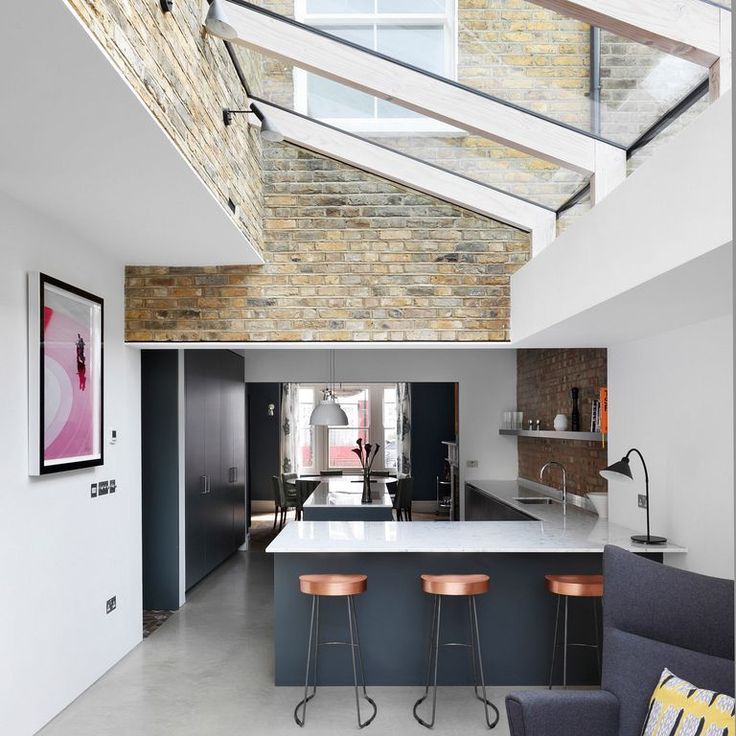 One possible solution is to add the new space as an entirely separate building in a sympathetic style – either traditional or contemporary – and to join the two with a fully glazed walkway.
One possible solution is to add the new space as an entirely separate building in a sympathetic style – either traditional or contemporary – and to join the two with a fully glazed walkway.
Choosing structural glazing for the walkway will reduce its visual impact and leave the original building’s character unaltered. This is a device favoured by many conservation officers and can work well in linking existing period buildings, too.
8. Fireplaces: Bear Energy Efficiency in Mind
Mendip Stoves' Woodland is an DEFRA-approved Ecodesign Ready stove which is double sided making it the perfect addition to an open-plan extension (Image credit: Mendip stoves)With increasing emphasis on energy efficiency, many people are blocking up open chimney flues and air vents or excluding them from their extension plans. Yet there are two energy-efficient options that still give the feature and comfort of real flames and are fitting for any house extension idea.
Flueless gas fires are 100% energy efficient and require no chimney or flue: a catalytic converter cleans all harmful combustion gases, producing just water and carbon dioxide.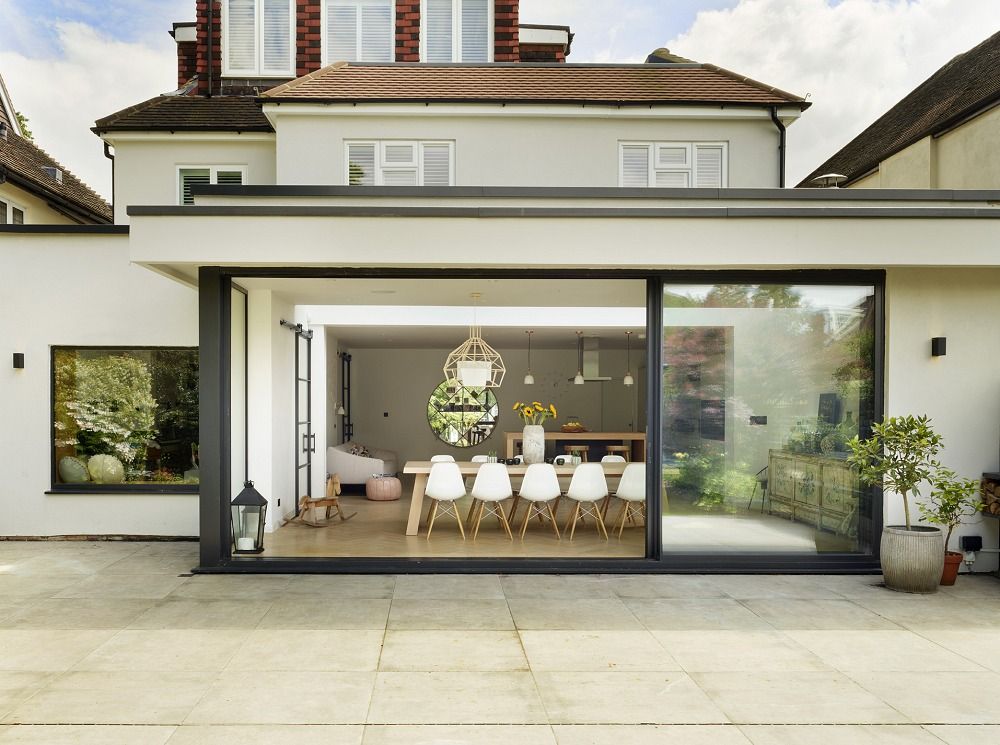 Designs include traditional fireplaces and stoves, and contemporary hole-in-the-wall models.
Designs include traditional fireplaces and stoves, and contemporary hole-in-the-wall models.
The second choice is a room-sealed log burning stove, connected to an internal air source to prevent any draughts. They are highly energy efficient and there are some exciting modern design options.
(MORE: Fireplace Ideas)
9. Outdoor House Extension Ideas
(Image credit: Garden House Design)Verandas and covered outdoor spaces provide somewhere to sit or eat outside during the warmer months, but are protected from either too much sunlight or light summer rainfall.
You could choose a traditional option, such as a loggia, or go more contemporary space, set beneath a projecting flat roof supported by slender steel posts, perhaps with an area of slatted sun louvres.
(MORE: How to bring the outside in)
10. Choose Pocket Doors for the Best of Both Worlds
When it comes to your house extension design idea, if you can’t decide between enclosing a new extension with a wall or going open plan, consider fitting sliding pocket doors, giving you the best of both worlds.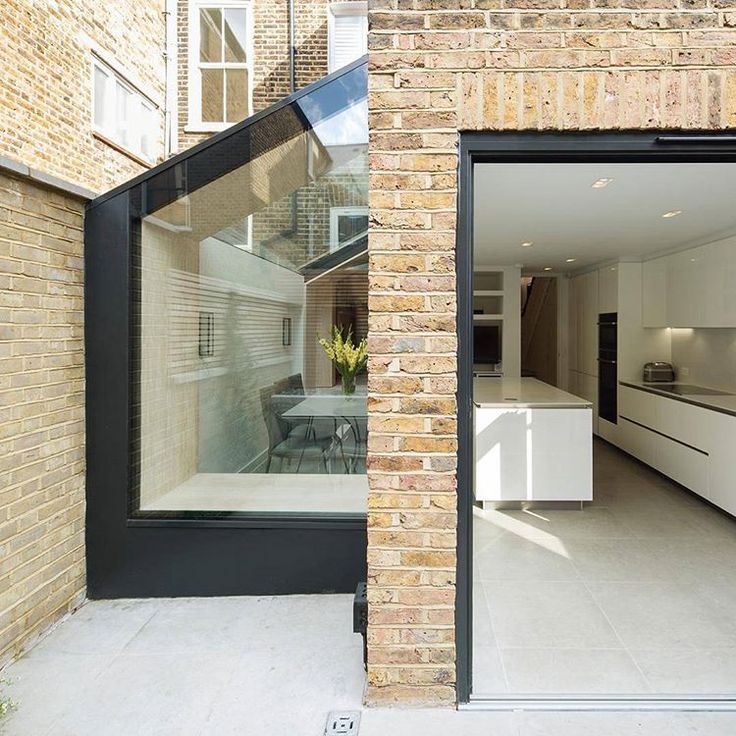 When closed, sliding flush doors can give the appearance of a wall, but when open they can disappear within the wall, presenting a clear opening.
When closed, sliding flush doors can give the appearance of a wall, but when open they can disappear within the wall, presenting a clear opening.
Pocket door systems are available off the shelf (try Em-B ) or you can buy the running gear separately (try Häfele ) and have doors made up to suit your own design.
11. Make Sure Your House Extension Idea Features Obscured Glazing for Privacy
Introducing lots of natural light is one of the key ingredients in successful extension design. Where a potential new window opening will look out onto a neighbour, the street, a side alley or directly onto a boundary, consider using obscured glazing, so you get the benefit of daylight but without anyone being able to look in or out.
Traditional options include textured or stained glass and glass blocks, and more contemporary options include acid-etched or sand-blasted glass and coloured glass.
12. Make a Feature Out of Your Lighting
(Image credit: Original BTC)Top tip
Independent control of each circuit using dimmer switches or smart switches with preset options is essential.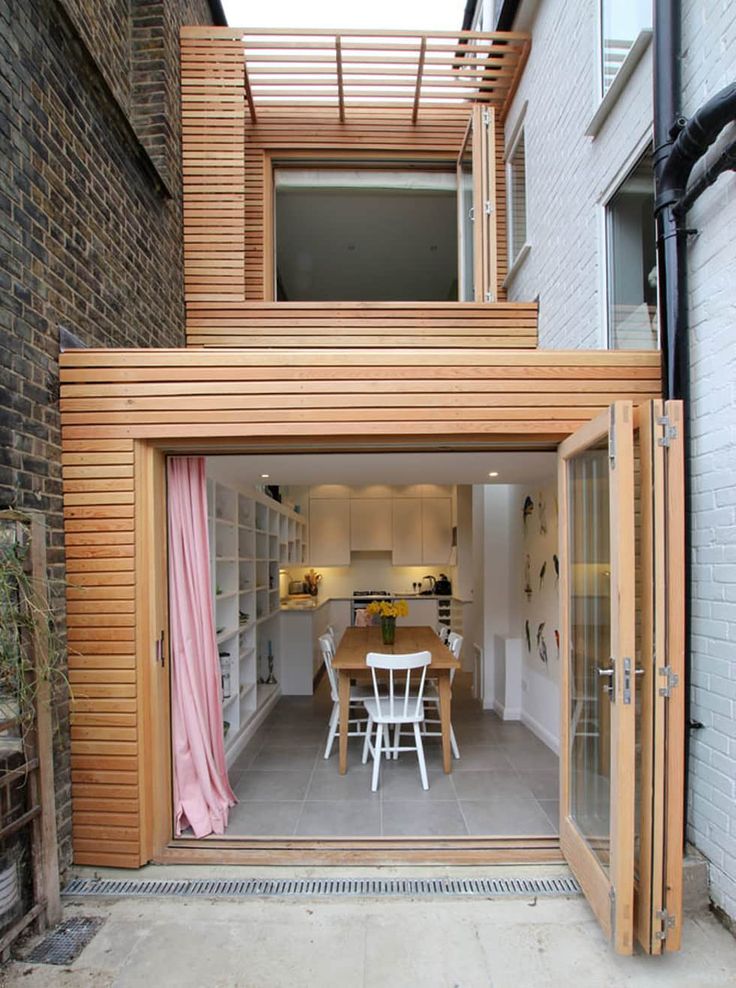
A well thought out lighting scheme will create a great atmosphere in your new space, allowing you to use different combinations of circuits for different activities.
As well as ambient lighting to provide basic background light for everyday activities, include accent lighting in the form of directional spotlights, uplights, downlights, wall washes, baffled (concealed source) lights, table lamps and standard lamps to create light and shade, which is key for atmosphere. Add decorative lamps, for instance, above a kitchen island or dining table as feature lighting.
13. The Best House Extension Ideas Manage Acoustics
Interior timber cladding can act as a great acoustic deadener while offering the opportunity to add extra character (Image credit: Indigenous)Contemporary extensions with glass walls, polished stone or concrete floors and crisp, clean lines can look fantastic, but they can also create acoustic problems as sound reverberates from one solid flat surface to another.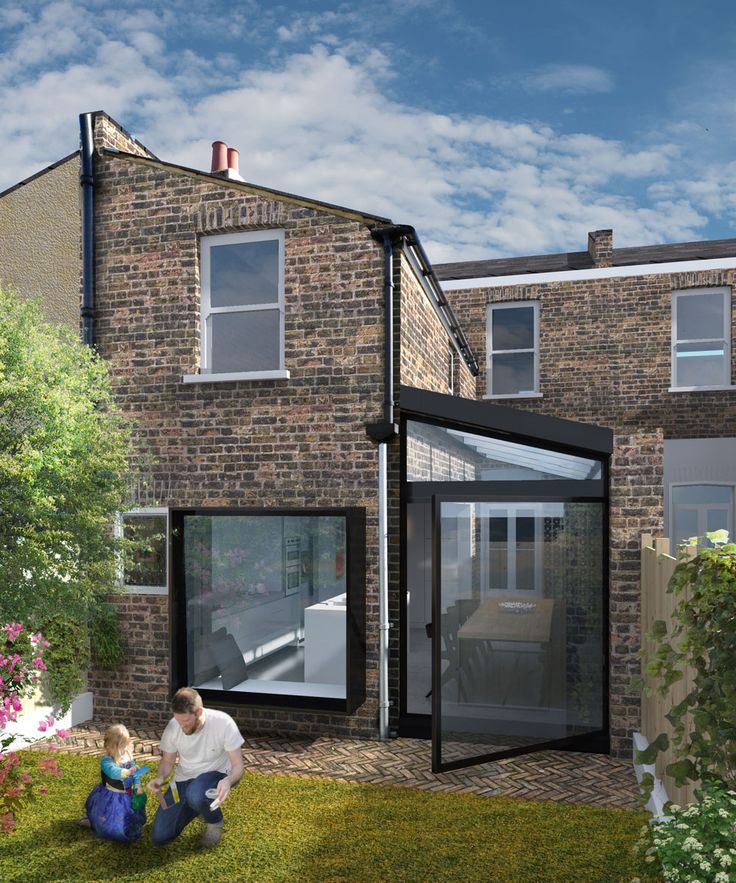 Such problems need to be overcome by introducing soft sound-absorbent materials into the room.
Such problems need to be overcome by introducing soft sound-absorbent materials into the room.
However, rugs, curtains and soft furniture are not always appropriate — in a dining or kitchen area, for instance. An alternative is to fit some form of acoustic panels. These can be fitted to the walls as textured profiled panels like wall art, or flat panels printed with any chosen image.
14. Frame the Views from Your House Extension
Position window openings to frame the best views and to improve privacy — by screening off any unsightly external features or neighbouring properties. Options include projecting bay windows and oriel windows set at an angle, with one or both reveals designed to act as a blinker.
This dormer loft extension beautifully captures the views of the treetops to create a stunning master bedroom (Image credit: Chris Snook)Think about window styles including shape and the height of the cill — narrow elongated windows can create wonderful panoramic aspects, or be designed to frame a particular landscape view.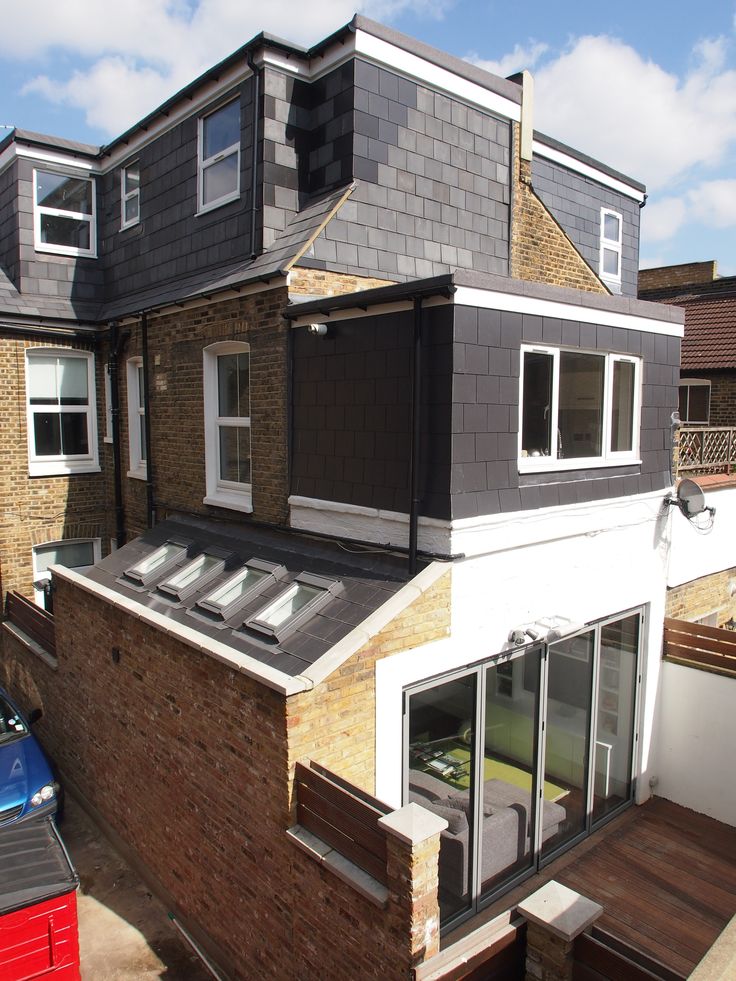 Low-level windows can be effective at creating views when sitting or lying in bed.
Low-level windows can be effective at creating views when sitting or lying in bed.
Window seats can be another useful device here.
15. Consider a Cantilevered House Extension Idea
Cantilevering is a useful device for creating design features such as balconies, mezzanines or whole storeys that project out from the floor below and appear to float with no visible means of support.
This award-winning cantilevered extension designed by Adam Knibb Architects is a clever solution to a challenging site (Image credit: Martin Gardner c/o Adam Knibb Architects)16. Make the Most of a New Staircase in an House Extension
If you decide to go for a new staircase design when extending, consider making it a key design feature. Options include floating cantilevered treads, open treads, glass or metal balustrading, galleried landings, sweeping curves and spirals. It is probably the best opportunity to create an exciting architectural feature in the home.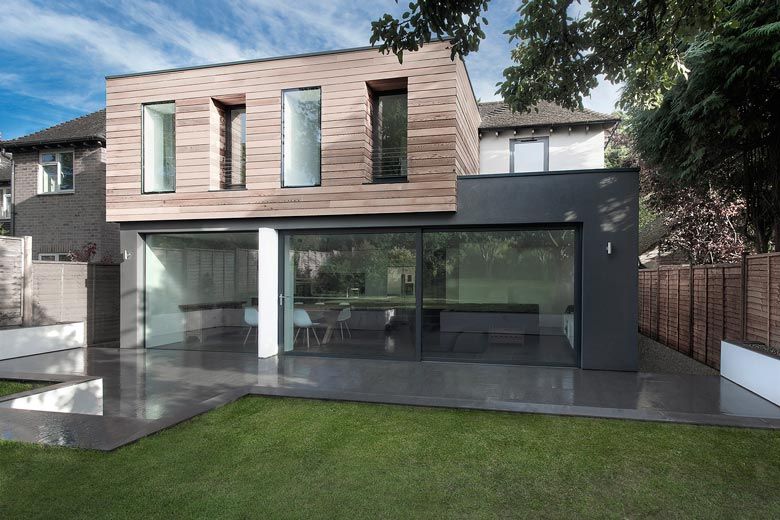
17. Give Your Home an Exterior Makeover
This 1930s bungalow was also given an exterior facelift (and reclad in render) when it was extended (Image credit: Paul Arthur)Instead of building an extension to match your property’s existing architectural style, the project can become part of an overall redesign scheme that completely transforms your home’s appearance. This is a good technique for adding character and value to buildings that are bland, utilitarian, unfashionable, or which have been extended unsympathetically in the past.
You might be able to undertake the remodelling work under Permitted Development rights (whereby planning permission is not required), but do check with your local planning authority first.
(MORE: Exterior Makeover Design Guide)
This new extension features vaulted ceiling and reclaimed oak trusses (Image credit: Dave Burton)A vaulted ceiling with exposed oak beams makes a great design feature that gives a room instant character — ideal for a kitchen, sitting room or master bedroom. An entirely oak frame extension is ideally suited to a rustic-style property such as a cottage, farmhouse or a barn conversion, or an Arts & Crafts home.
An entirely oak frame extension is ideally suited to a rustic-style property such as a cottage, farmhouse or a barn conversion, or an Arts & Crafts home.
A cost-effective option is to combine an oak frame principal roof structure (principal rafters, collar, tie beams, braces, ridge and purlins) with softwood rafters — the latter hidden behind plasterboard and insulation.
An oak frame extension can be encased within structural insulated panels (SIPs) or any other construction system to ensure it meets Building Regs’ standards of thermal efficiency.
19. Introduce Natural Light into Your House Extension Idea
(Image credit: Jean-Christophe Godet & SOUP Architects)Bringing daylight into your extension from more than one direction to add multiple layers of light and shade, will greatly enhance the quality of space.
As well as maximising window and glazed door openings, consider introducing a bank of rooflights, a roof lantern or a clerestory (a row of windows set just below ceiling level and above the eye level) to bring in light from above.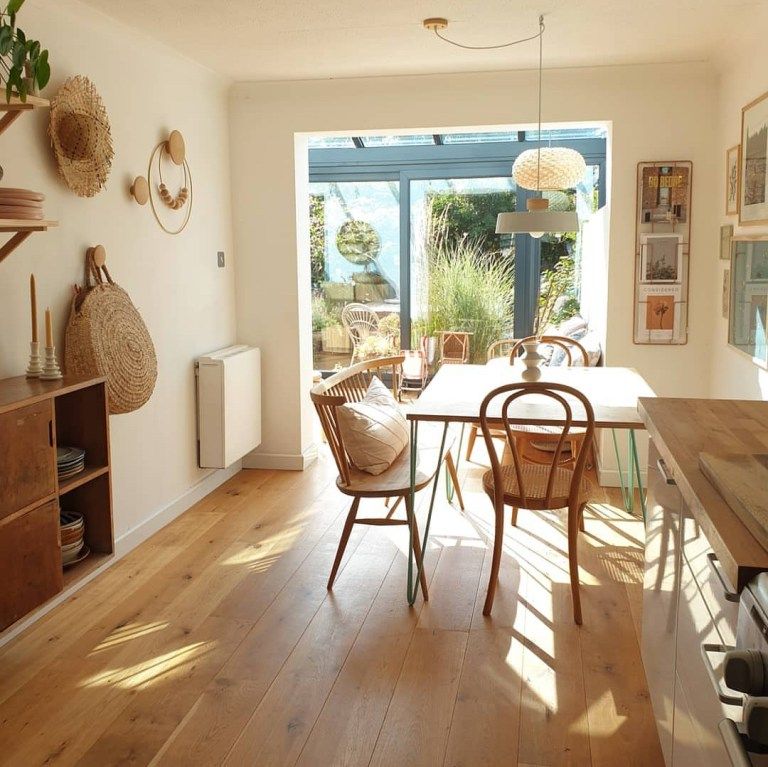
In addition to bringing light deep into the floorplan of an extended home, these ideas will also help address issues regarding overlooking and privacy.
20. Consider an Annexe
Where the garden is large enough, an annexe might well prove a more sensible and manageable solution than extending the existing house. A garden building might provide additional games space, but would be much more exciting as self-sufficient accommodation, providing kitchen, bedroom and bathroom spaces.
(MORE: Do I need planning permission for an annexe?)
(Image credit: Garden House Design)Get the latest news, reviews and product advice straight to your inbox.
Contact me with news and offers from other Future brandsReceive email from us on behalf of our trusted partners or sponsorsMichael is Homebuilding & Renovating's Director of Content, Vice Chair of the self build industry body, the National Custom and Self Build Association (NaCSBA ), presenter of multiple property TV shows and author of Renovating for Profit (Ebury).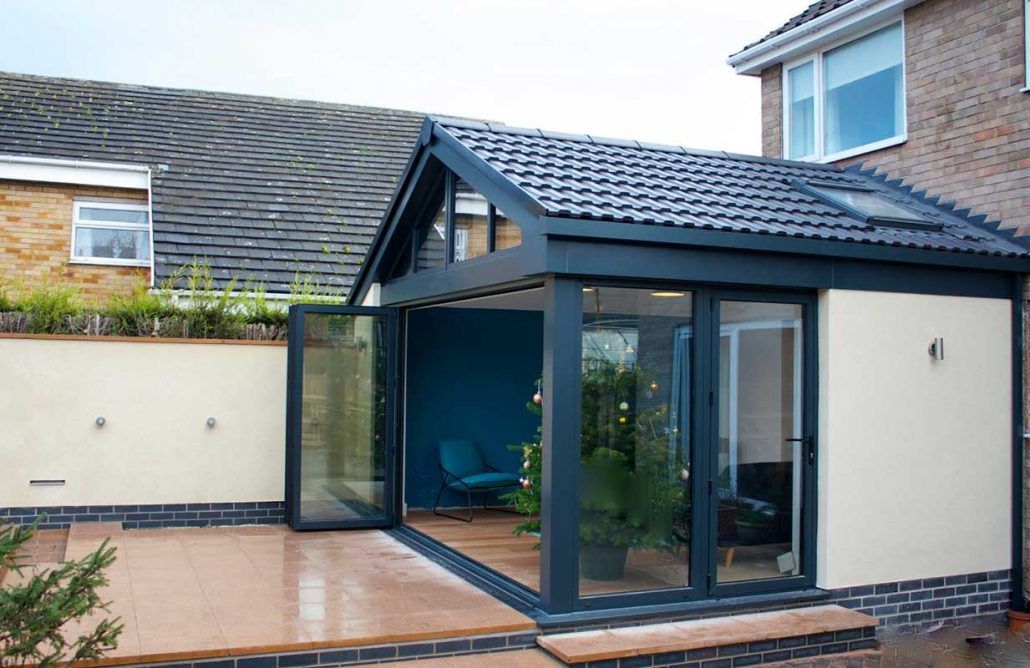 He also runs an architectural and interior design practice, offering design and project management services. He is one of the country's leading property experts and has undertaken over 30 building projects including two self-builds and the renovation of a Grade-II listed farmhouse.
He also runs an architectural and interior design practice, offering design and project management services. He is one of the country's leading property experts and has undertaken over 30 building projects including two self-builds and the renovation of a Grade-II listed farmhouse.
Michael has presented over 150 property shows for BBC, ITV1, Channel 5, UK TV Style, and Discovery RealTime, including I Own Britain's Best Home; Don't Move Improve; Trading Up; Good Bid, Good Buy; Build, Buy or Restore?; How to Build A House; and Hard Sell.
Michael is also a regular expert at the Homebuilding & Renovating Shows. He has written for leading British newspapers, including The Daily Telegraph, Sunday Times, Daily Express and The Independent and has appeared on news programmes such as BBC Breakfast.
Homebuilding & Renovating Newsletter
Thank you for signing up to Homebuilding.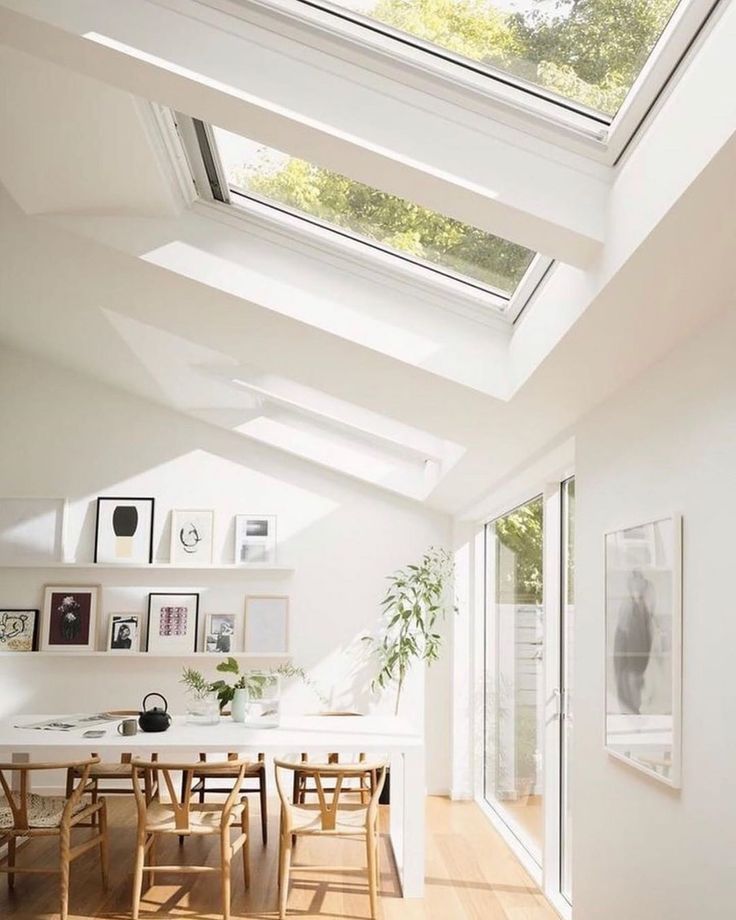 You will receive a verification email shortly.
You will receive a verification email shortly.
There was a problem. Please refresh the page and try again.
By submitting your information you agree to the Terms & Conditions and Privacy Policy and are aged 16 or over.design ideas and a step-by-step description of the building (185 photos and video)
An extension to the house - current ideas and step-by-step construction instructions (185 photos)
Author: Rerooms Design Studio
. Sometimes there are not enough square meters, often unprofitable location of living rooms. Anyone who wants to make an extension to the house does not have to invite a specialist bricklayer.
With ready-made drawings in hand, a minimum of building skills and creative ideas, you can achieve the desired result.
Contents:
What kind of extensions are there
The options for auxiliary structures are very extensive. Depending on the purpose of the future premises, the following types of outbuildings are distinguished:
Threshold
A thoughtful threshold has several steps and handrails.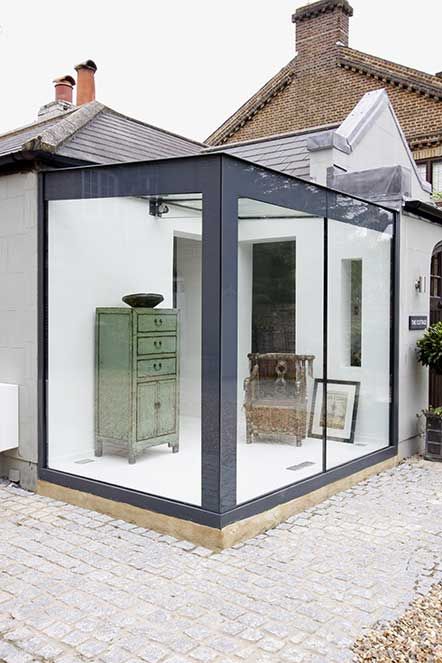 The purpose of this type of extension is the original complemented design of a residential building. In addition, the threshold will be relevant in the room where the elderly live.
The purpose of this type of extension is the original complemented design of a residential building. In addition, the threshold will be relevant in the room where the elderly live.
Canopy
Creating an additional area sheltered from the rain and the scorching sun is a thoughtful idea for a private house. Under the canopy, you can place several benches or chairs, a table and chairs for a summer breakfast and evening tea.
Garage
Some owners make an extension for the car with their own hands directly to the residential part of the house. In the winter season, you no longer need to run to the garage in the January cold.
Dining room
The idea to separate the kitchen and dining areas came to Russian society from abroad, but this did not lose popularity.
When the square footage does not allow the kitchen to be divided into islands, building an extension is the ideal solution.
Corridor
The extension of the veranda to the house allows you to slightly expand the main room by increasing the auxiliary area.
Building materials
The choice of building material is not an easy task. Regardless of the purpose of the future premises, preference should be given to moisture-resistant, durable, environmentally friendly parts.
The list of the most popular materials includes:
Wood
The most commonly used types of wood are laths and beams. The tree is treated with antiseptics, antipyretics and a protective environment against pests.
From a large assortment in construction stores, you can choose the material of any finish and texture, color range and decorative coating.
Brick
Today, brickwork is an essential attribute of many interior styles. The buyer is offered a huge selection of both shapes and structures, as well as color shades.
The use of brick as the basis for a future extension allows you to opt for sufficiently voluminous insulated rooms for year-round living.

Decorative stone
It can be used both for interior decoration of the room and for the installation of the main frame. The difference is only in the appointment of the future extension.
The use of only decorative stone does not allow the use of the room for a whole year: in winter it is quite cold in such a room.
Glass panels
In practice, there is no exclusively glass room - any design requires a frame. Most often, a wooden or metal base acts as a skeleton.
Glass extensions play the role of summer terraces, rooms for summer leisure and organization of the dining area.
Chipboard boards
Moisture-resistant material (due to special processing), perfectly retains heat. Ideal for building winter insulated rooms.
Laying the foundation for the extension
The foundation is an obligatory stage in the construction of auxiliary premises, regardless of their practical application.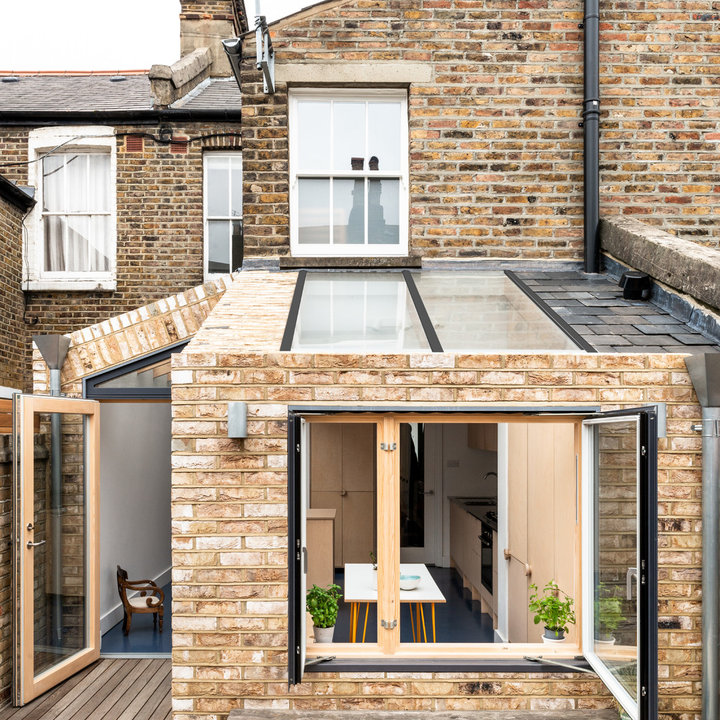 There are several basic types of creating a solid foundation for a living room box.
There are several basic types of creating a solid foundation for a living room box.
Each method has its pros and cons of application, negative and positive qualities. The general stages of work are:
- Cleaning the soil from debris and fragments.
- Excavation of the required depth (depending on the size of the room and the expected load).
- Compacting the bottom layer.
The further course of work depends on the type of base casting.
Forming strip footing
A feature of this technology is the pouring of concrete supports in the form of original ribbons: in the shape of the letter "P" or separated strips. After tamping, a layer of sand, clay or fine gravel is poured onto the bottom of the pit.
The remaining cracks and gaps are filled with cement mortar. This technology is perfect for forming the basis for large square or rectangular rooms.
Pole supports
This technique may not be chosen by chance - if the future extension is small, designed for a minimum load, the formation of tape fills is impractical.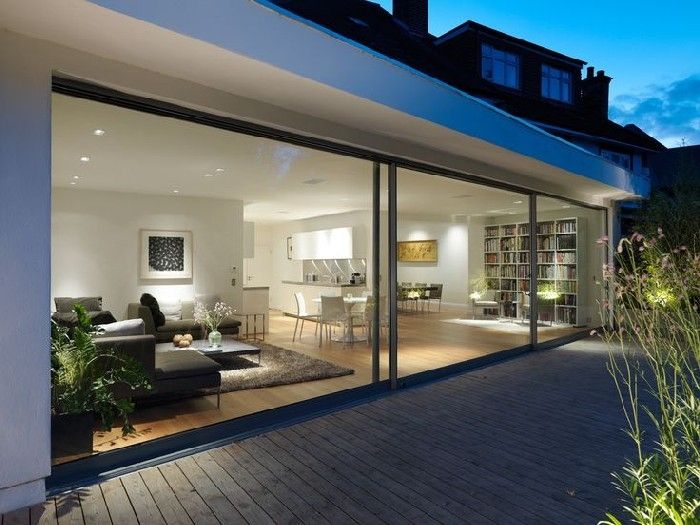
In this case, you should opt for poles. Step-by-step instructions for work:
- After clearing the land, dig holes of the proper depth.
- Maintain a distance between the pits of about 1.5-1.6 meters.
- As a base, sand, gravel and layers of roofing material are laid on the bottom. The construction "cushion" is periodically tamped to get rid of possible air jams.
- Next, you need to make formwork, pour four reinforcing bars in cement mortar into each pit.
- Only after the stage-by-stage drying of the solution, it is possible to start manufacturing the extension frame.
Floor installation in the room
The choice of the way to fill the floor is the basis of high-quality finishing of the room. There are many options and materials for the coating device, but each of them has a number of features.
It is worth remembering that the subsequent interior finishing also depends on the quality and texture of the base.
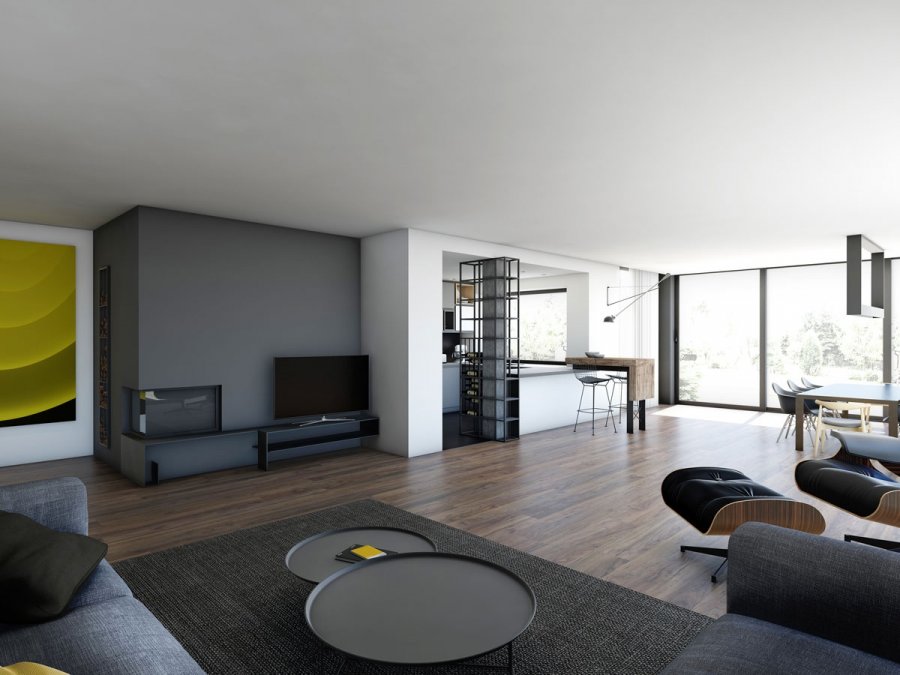
Concrete flooring
Very strong floor, resistant to moisture and warping when properly poured. However, there are disadvantages.
Cement mortar should not be used where the soil is eroded by groundwater. Constant water pressure can damage the base of the foundation, and a crack will go along the walls of the extension.
Decorative stone covering
Rarely used for residential premises, only in combination with other types of materials, since it does not retain heat at all. However, as a floor for a summer terrace, it is perfect:
- Stable base.
- Beautiful decor.
- Not subject to deformation.
- Easy to use material.
Floor on wooden floors
It is possible to install this coating even on a columnar foundation, but before forming the frame, assemble the so-called load-bearing logs.
The wood must be treated with antiseptics and a moisture-resistant coating before laying. High-quality chemical treatment is the key to long-term floor service.
High-quality chemical treatment is the key to long-term floor service.
Walls for extensions
The materials used for building walls vary depending on the purpose of the premises, the seasonality of its use, and the financial potential of the owner of the house.
In addition, the characteristics of the walls of the main residential complex are of some importance: the structure of the material, the layout of the structure, the scheme of pouring the foundation.
Depending on these indicators, choose the model of the future extension.
Wooden panel walls
More often used for building an extension to a wooden house, or as a utility room, outdoor storage room, a small bathhouse.
When assembling the structure, observe the following sequence:
- The room frame must be assembled separately before installation on the foundation site.
- First of all, the corner supports are assembled with fixation with metal clips.
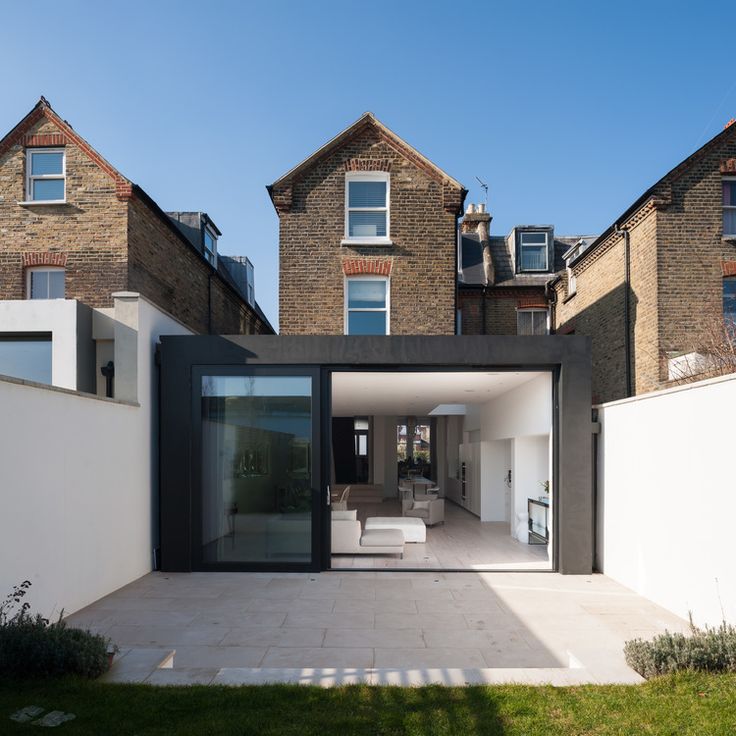
- Next, attach the intermediate posts.
- The frame is placed on the site, and only then proceed to attach the wall panels.
Brick walls
An extension to a brick house may not be made of the appropriate material, however, the use of a single masonry scheme will help to avoid possible gaps at the joints. Sequence of actions:
- The first row of bricks is laid on a layer of roofing material. This approach will improve the waterproofing of the future premises, protect against dampness and moisture.
- To reduce wall settlement, a reinforcing mesh is laid between every third and fourth rows.
- After masonry is completed, the building box is fixed with concrete rings.
Foam blocks as a working material
It is desirable to carry out an extension to the house from foam blocks according to the same principle.
In addition to a number of construction features, the material is easy to work with, its porous structure (very easy to cut, retains heat), provides strength to the structure.

Step-by-step instructions on how to make an extension to the house from gas silicate blocks:
- Place the blocks starting from the corner of the main building.
- Each part must be wetted on the bottom surface before applying the bonding solution.
- After laying the first three or four rows, the frame of the building is treated with a chemical composition for waterproofing.
It will not be difficult to prepare a binder mixture even for an inexperienced master: there are detailed instructions for each stage of work.
Roofing of the extension
The roof of the extension to the house is another important point in the construction. The choice of roofing material again depends on the purpose of the room, the shape of the frame and the preferences of the owner of the house. How to arrange the roof of a structure correctly:
- Wooden beams (ceilings) are laid on the erected walls.
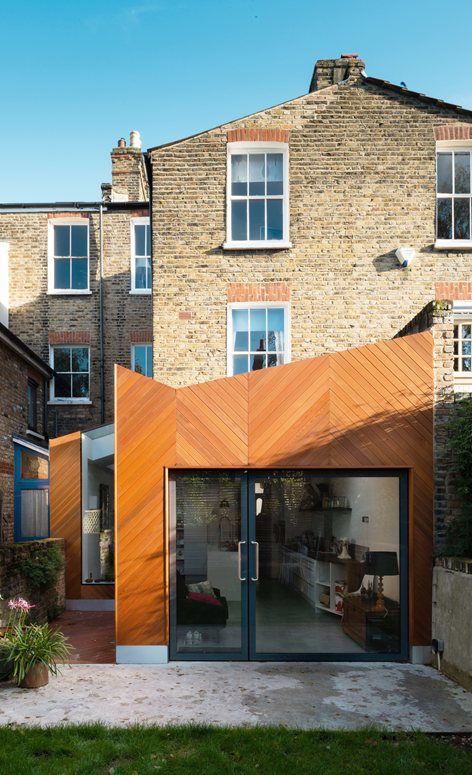
- Supports for rafters must be laid along the perimeter of the building.
- A waterproofing film and sheathing are applied over the rafters.
- The selected type of roof is laid on top of the battens.
For those who have not yet thought out a variant of the future building, have not drawn up a drawing and layout, you should familiarize yourself with the photos of finished models of extensions to the house on any site of practical construction.
Photos of Sendings to the house
9000 9000 9000 9000 9000 9000
002
Please repost :) Many people dream of having their own dacha, but those who already have it try to improve it, make it comfortable, convenient and practical. It is not so often that the construction and arrangement of a dacha economy starts from scratch, so to speak - in an open field. As a rule, we acquire a plot with buildings already built and equipped to some extent. However, it would seem that the obvious advantage - there is no need to waste time and money, has its "minuses", namely, the new owner has to redo everything based on his needs and his ideas about comfort and practicality. Of course, you can demolish everything and rebuild, but this is fraught with such difficulties and costs of effort, time, material resources that this option is not suitable in any way, in this case, there is only one thing left - to make an extension and increase the total area due to it . Looking at the pages of sites ready-made options, or rather a photo of an extension to a house in a summer cottage, you can see: with the right approach to solving this problem, the result is quite acceptable, and given the lower costs in comparison with the option of new construction, it becomes the only correct one. So, let's figure out how to make an extension with your own hands, what is needed for this, what "pitfalls" can await us along the way and reveal some non-obvious aspects. Summary of the article: As in any other business: before you start sawing, laying bricks and in general - creating a fuss of construction work, you will need to think carefully, plan everything. At first glance, it may seem that what you have planned will require special skills or knowledge from you, however, there is nothing complicated and impossible, it all depends on your desire to work and study a little. As a rule, specialists are contacted when carrying out work on the supply of communications or during calculations during planning. Let's decide what we need, what is required, and for this we need to know what species exist and what are their distinguishing features. So, as an additional room can be: This is the simplest option, it does not require a foundation: special support pillars act as a base for the main element - and this will be the roof of the extension. In this case, the walls are not erected at all, or some kind of screens act as them, for example, you can make a living curtain from specially planted climbing plants, which are guided along pre-strengthened threads. In principle, the canopy still cannot be called an extension in the full sense of the word, it is rather an additional structural element of the main building. It can be a veranda or a terrace. The summer room does not require the use of insulation, the roof is made of lightweight material, and since the structure itself is lightweight, the foundation is made simple and cheap. The disadvantage is also obvious - in this room you can relax or work only in the warm season, in winter the room is not used. The main "advantages" include the simplicity of design, low material costs, and the speed of construction. In this case, we are dealing with a full-fledged capital construction. The convenience and comfort of the room will depend on how carefully everything will be designed, on the right choice of materials, on the quality of installation and finishing work. It will require the construction of a full-fledged foundation, roof, main walls. Some infrastructure is needed: heating, electricity, ventilation, etc. When choosing this type, remember that the kitchen will require you to sum up the entire list of communications, that is, during its construction, not only the room itself, but the entire infrastructure is carefully designed. In general, the kitchen will require additional financial investments from you, and for this reason it is rarely used as an additional room, with the exception of a simple, summer option. The building itself will require you to build a full-fledged foundation, solid walls made of stone or reinforced concrete structures, and a roof. Inside, it is required to provide an inspection pit and think over a waterproofing system, otherwise the pit will be filled with water in the spring and during heavy rains. Please note that the garage can be heated, in which case it will be necessary to prepare an appropriate plan and install heating. Another type of outbuildings - bathrooms, showers or sanitary rooms. This option requires the entire complex of engineering communications: sewerage, water supply, etc., and if it is not an outdoor shower, a heating and ventilation system; This is one of the most difficult options, and due to the specifics and technical features, it is better to build a sauna separately. So, after the type is chosen, we create the project itself, it is important to provide for all the moments and stages of work in it. Treat the design with due attention, the final result of all your work and costs largely depends on the quality and information content. The most popular today are frame extensions, they are simple, require a minimum of material costs, and are quickly erected. Frame-panel technology: panels with openings are made separately, and then, on the spot, they are assembled into a single structure. This method is great for extensions to a stone house; as a rule, it is not used for wooden buildings: Frame-and-frame technology: suitable when an extension of a terrace or a small room is needed. As a rule, this method is used for summer rooms. The main advantage is the simplicity of design, as well as the fact that the master has a wide choice of methods, materials and options. Frame technology is optimal when it is necessary to add verandas, summer rooms and other unheated and simple buildings. For a capital, all-weather premises or a garage, this method is rarely used, since in order to give the structure strength, it is necessary to significantly complicate it, and this is not always advisable. For capital premises, stone or timber structures are more suitable. Regardless of which technology you use, the right extension to your home has one important design feature, namely, it will need to be attached to the main building. In view of the importance of this point, let us dwell on it in more detail. Proper connection of an additional room will require careful calculations and research. It is necessary to take into account many factors and nuances, and therefore it is better to entrust planning to specialists. During independent design and installation, special attention is paid to the foundation, its interface with the main one. It is important to correctly attach the walls, roof, take into account the mutual influence and seasonal changes. The most commonly used method in practice is the use of reinforcement technology, and iron bars act as reinforcement. It is important to properly install the roof, to think over and provide for the flow of water from the higher roof, if the design is incorrect, walls and ceilings may get wet. If you decide to build an extension on your summer cottage, it is important for you to remember that it is important to arrange any additional building structures in compliance with the relevant legislation. In addition, for the implementation of any construction work, first obtain a permit for their implementation. To obtain permission and complete all required paperwork, you will be required to provide a properly executed project. So, the project, which provides for a beautiful design of the extension, is ready, the necessary permits have been obtained, the necessary tools and all building materials are available, you can proceed directly to work. In this case, the technology will not differ much in consistency or in some features. These are the usual works on erecting walls on a pre-prepared foundation, installing a roof, roofing, installing floors, summing up the necessary engineering communications, installing electrical wiring, finishing work outside and inside. As you can see, the extension does not differ much from an ordinary building, in many ways it is, with the exception of erection in contact with the main building. That is why it makes little sense to describe the installation work, and if necessary, you will find the information you are interested in on your own . 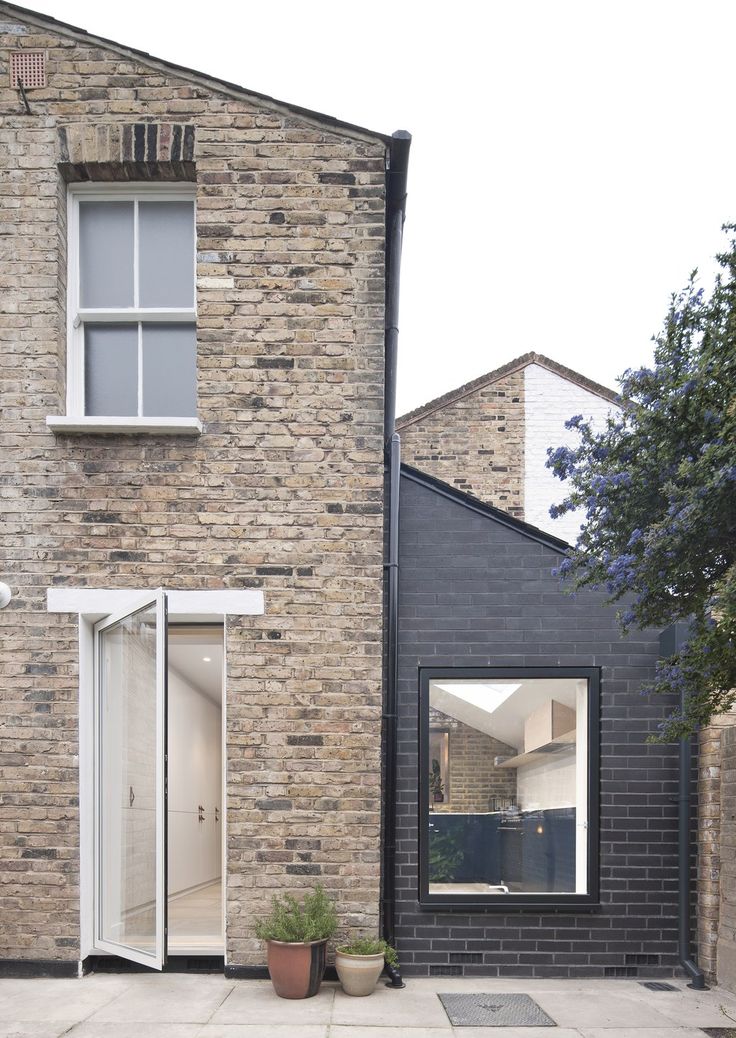 For example, the usual situation is when the area of \u200b\u200bthe cottage is insufficient.
For example, the usual situation is when the area of \u200b\u200bthe cottage is insufficient.
Thinking and planning
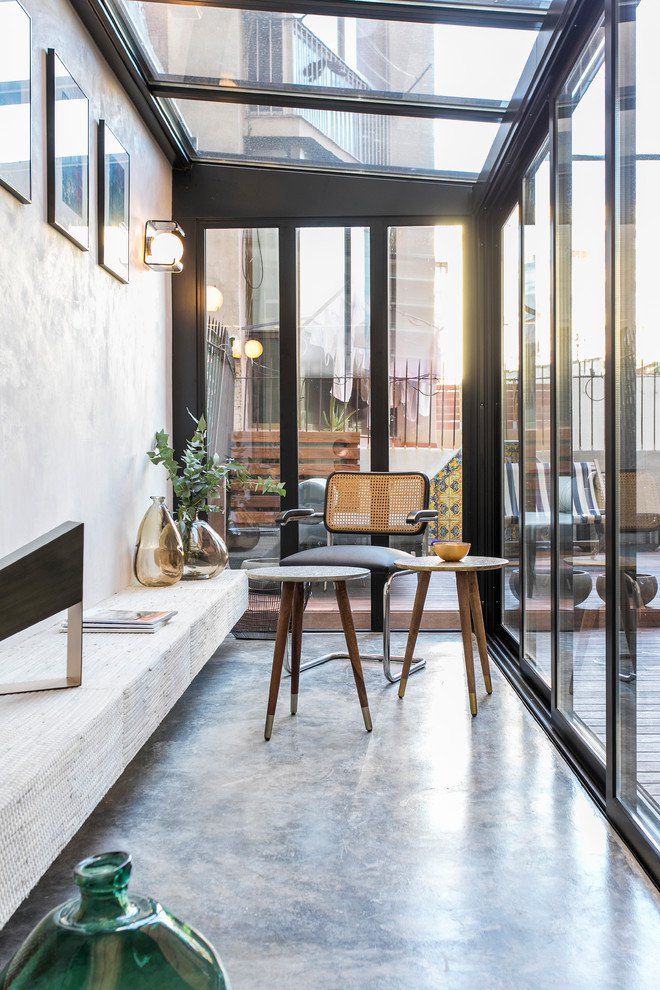 Otherwise, the result of the work, all the invested funds, the time spent may not meet your expectations, or nothing will come of it at all, but a sad experience, you see, is not what we expect and what we need.
Otherwise, the result of the work, all the invested funds, the time spent may not meet your expectations, or nothing will come of it at all, but a sad experience, you see, is not what we expect and what we need. Conventional canopy
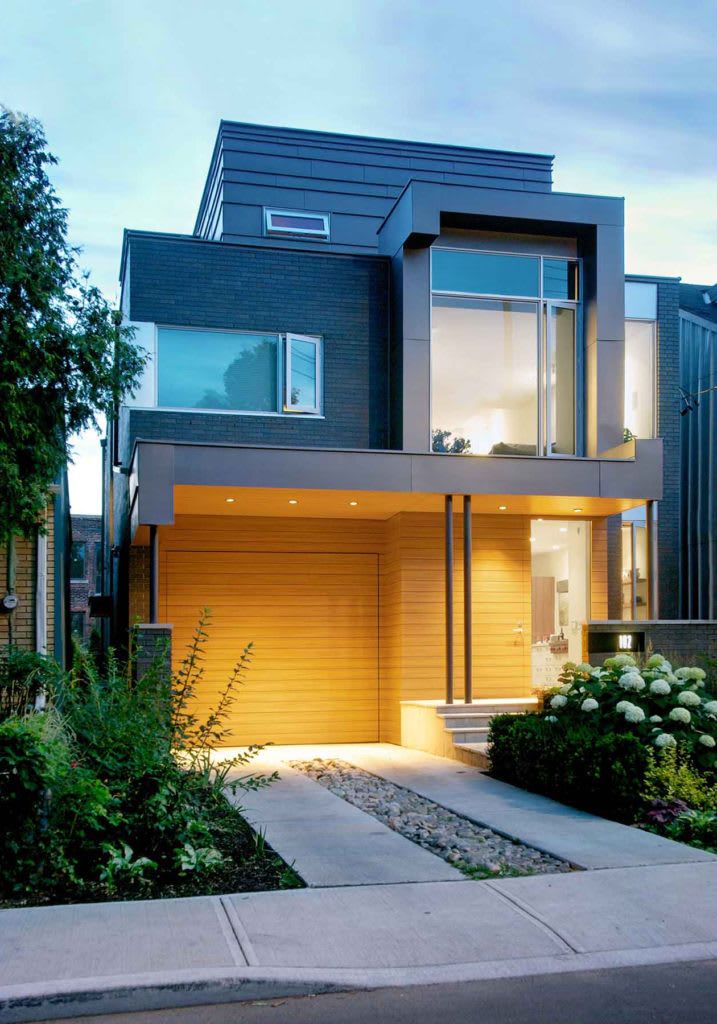
Summer room
Full-fledged housing for year-round use
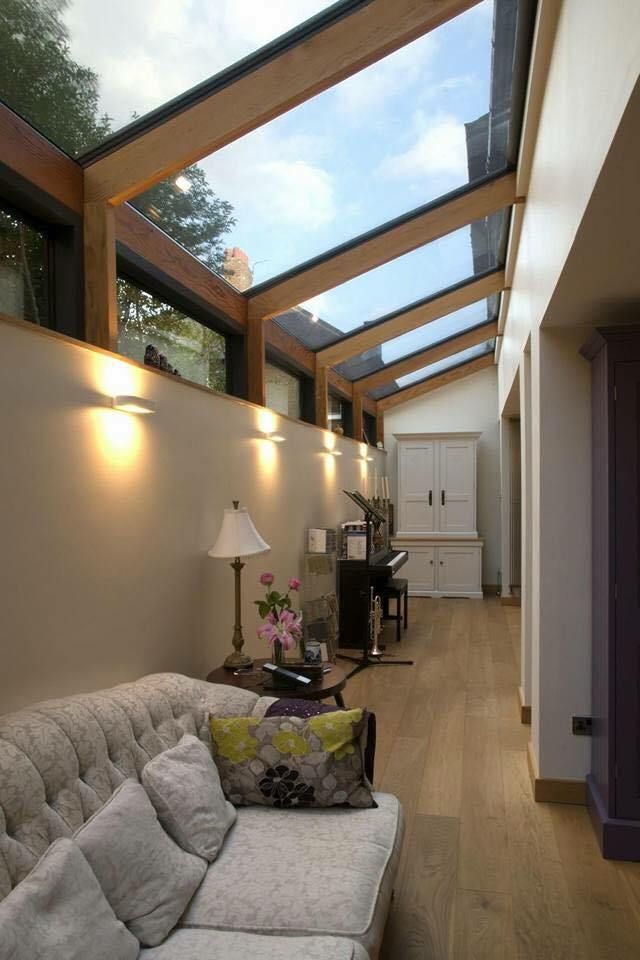
Kitchen
A popular view among summer residents - garage
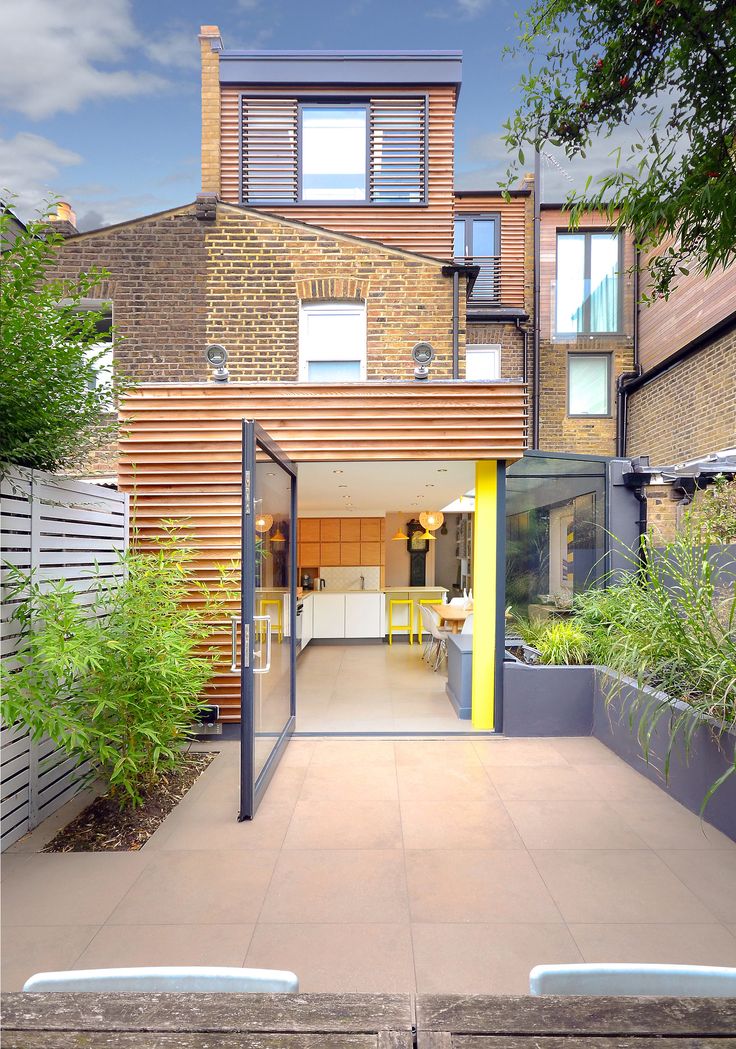
Sanitary room
Sauna
Construction technology
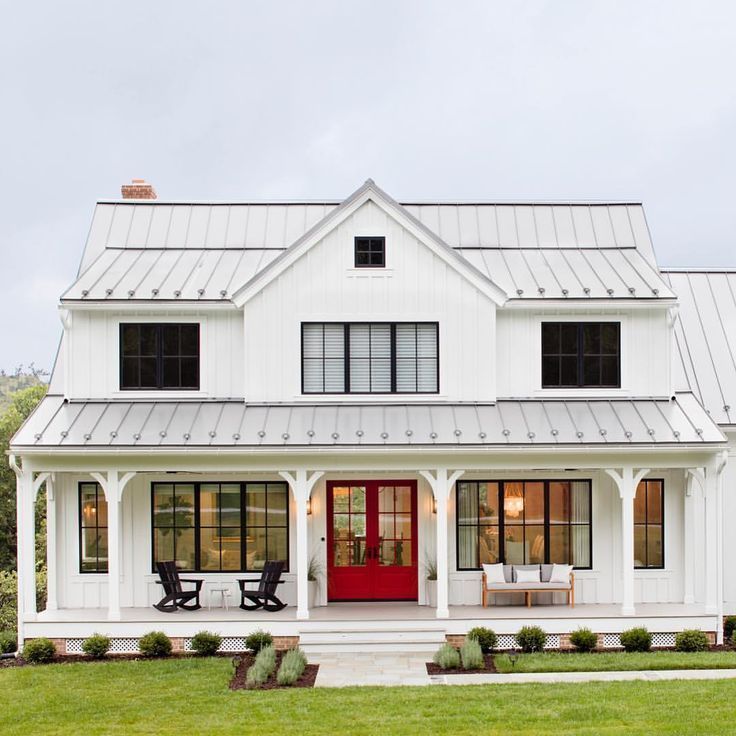 The following frame technologies are distinguished:
The following frame technologies are distinguished:
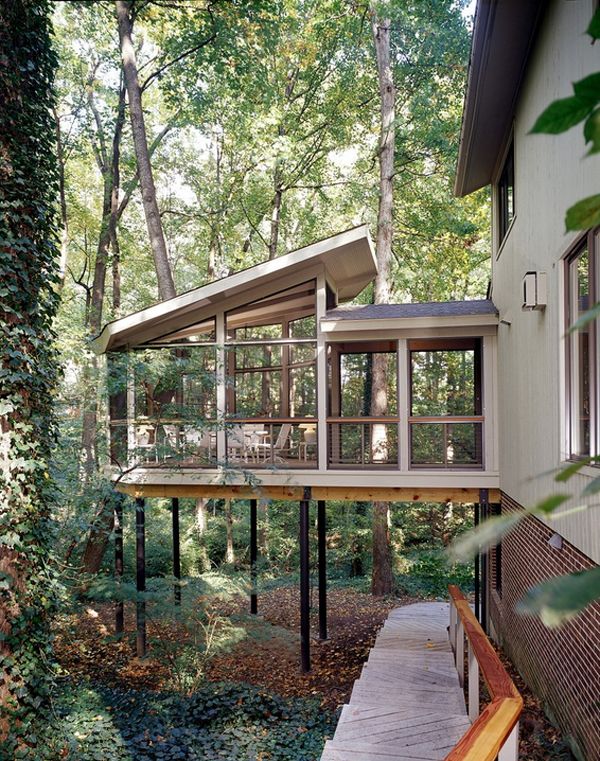 They have a margin of safety and other required qualities.
They have a margin of safety and other required qualities. Interfacing with the main building
 Widely used various mounting structures.
Widely used various mounting structures. Some legal points
Getting to work
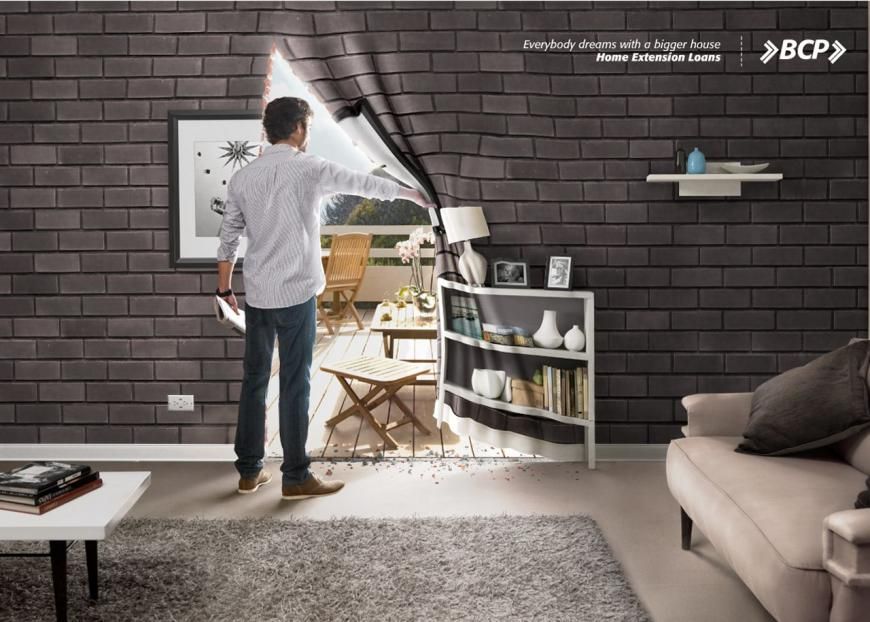
Photo of the extension to the house